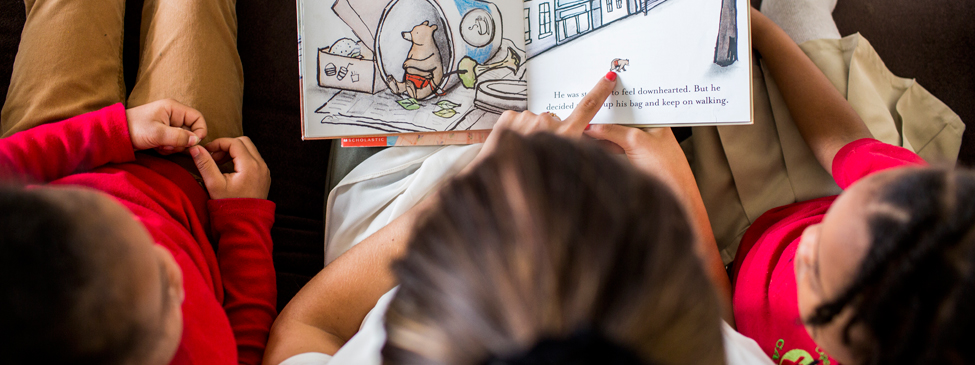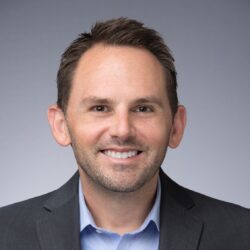In 2013, Denver Public Schools (DPS) launched the Denver Student Teacher Residency (STR). It is a unique partnership between DPS and local universities to create an intensive one-year teaching residency that prepares college seniors to become certified teachers upon graduation and fill district openings in high need subject areas. While they’re certainly not a magic bullet, residencies and other strategic partnerships with universities can play a key role in any district’s comprehensive plan to solve teacher pipeline challenges. To learn more about the partnership, we spoke to Sarah Flanders, STR Program Manager and Justin Smith, incoming STR Program Manager.
When did DPS decide to partner with local universities to create the one-year residency program?
Sarah: Like many urban districts, we were struggling to find teachers for certain subjects, especially for our English language learners, secondary math and science, and special education. The program was borne from the success of the Denver Teacher Residency, a one-year alternative licensure program started in 2008. The data showed teachers trained in the residency were outperforming other novice teachers. There was also a much higher rate of retention among residency teachers.
In 2013, our superintendent looked at that data and said, “Why aren't we doing this with universities in undergraduate programs?” We successfully obtained a grant to launch the STR and partnered with the University of Colorado at Denver (CU Denver), and Metropolitan State University of Denver (MSU). Our first cohort was trained during the 2014 – 2015 school year and our second cohort just finished and will seek employment in DPS.
From a hiring standpoint, how is the district benefiting from the residency so far?
Justin: DPS is not unique in the sense that, just like the majority of the other large, urban school districts in the nation, we're serving a student body that is predominantly students of color taught by a predominantly white teaching force. On average, we're hiring nearly 1,000 new teachers to the district each year, and many in our highest need areas are not from Denver, let alone the state of Colorado. With the STR, we can be incredibly intentional about targeting Denver natives.
We're also realizing that in order to get the best talent we have to start our recruitment, exposure, and development efforts much sooner than the senior year of college. Through our partnership, we're able to do things like strategically recruit high school students to become teachers in the neighborhood or city they grew up in. Not only do we want to recruit individuals who look like or have similar experiences as our students, but we also want to provide top-notch development to them.
What does the residency year look like? What are residents doing, and how are current DPS teachers involved?
Justin: All residents spend four days a week in the classroom with a highly effective DPS mentor teacher. Throughout the year, there are several windows in which residents own the classroom completely—from planning to execution—for a given amount of time. During their teaching period, they’re evaluated by their mentor, other mentors in the building, our program staff, as well as school administration and leadership. We also have residents videotape themselves, and evaluate themselves.
Every week, our mentor teacher engages in a coaching conversation with the resident. We base our coaching, as well as our course work, on our district framework for effective teaching. Residents also spend one day a week in a seminar taught by our program staff here at the district, as well as the university partners, and discuss all of the aspects of teaching—from theory to practice.
How do you assess the impact of the program? And so far, how do residents’ performance compare to other novice teachers?
Sarah: We do a lot of surveys. With principals, we want to know about their satisfaction with residents—not only in the residency year, but when they hire them as teachers, too. We will certainly be following each resident's data as they teach longer. For the first time last year, we did a survey with students in residents’ classroom, right after their lead teaching period. It gave us good data to work with the residents on what their own areas of strength were, and areas of growth, from the eyes of kids.
In terms of the residents’ performance, we don't have hard data yet. But anecdotally, their principals are very pleased and say they are coming into the classroom looking more like a second- or third-year teacher. The reason why, I think, is that a full-year residency really prepares teachers for what it's like to make it through a school year. It's different from an eight or 12-week practicum.
The majority of residents work in Title I schools. Having a full year in a classroom considered “hard to serve” is a huge learning experience. After they become teachers, they also have support in the form of monthly check-up meetings, access to a video platform to learn best practices, and virtual groups where they can observe members of their cohort and support each other.
What advice would you give to districts trying to replicate this model?
Sarah: Relationships are key. The foundation of the partnership should be grounded in student achievement. There's a lot of good work that exists in higher education, but understanding what schools and districts need, you must find university partners willing to step in and meet these specific needs. Both sides also have to commit to a willingness to refine the support and development offered to program participants.
One great thing is that all of us went into this partnership presuming positive intentions. No one pointed any fingers at anyone saying, “You're not doing a good enough job at the university,” or, “You're not doing a good enough job at the district.” We all have students at the heart of what we’re doing. That's key. Bumps do come along. Having a common goal in mind makes it easier to overcome those bumps.



